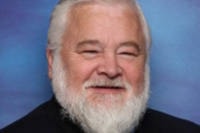If you’ve ever read a story to a child, you will know the truth of this. A child doesn’t ask, “Is it true?” Nor does she say, “Prove it.” Neither will he respond, “I can’t see it, so I don’t believe it.”
The hallmark of a good story is if the child says enthusiastically, “Tell me the story again.” With glee and abandon, a child loves to hear the same story again and again. I remember when my own children were younger that from time to time, just to see if they were paying attention, I would change the story up. Without fail, they would say, “No Dad, that’s not how it goes.” And then they’d go on to tell the story, almost word for word, from memory.
When we grow up, we never really outgrow our love of a good story, well–told. There is a part of each of us that wants to cheer, and to ask, “Oh, tell it again.”
That’s part of the attraction with good television dramas or good movies. We can watch them again and again, and even though we know the story, and we know how the story will end, we watch, and our hearts swell.
A Christmas Carol. How the Grinch Stole Christmas. Jesus Christ Superstar. Gone with the Wind. It’s a Wonderful Life. To Kill a Mockingbird. We each have our favourites.
A good story sticks with us.
A few years ago, the Swedish writer suggested that instead of calling ourselves “homo sapiens” (which is Latin for “wise or rational human being”), a better way of naming ourselves would be “homo narrans” (“storytelling person”). His point was not that we are not thinking creatures; rather, we are also or primarily storytelling creatures.
We make sense of the world and our place in it through story. Storytelling is how we create meaning, how we interpret reality, and how we come to know who we are and why we are.
This is why the church tells stories. This is why we read the Bible. It’s not an instruction manual. It’s a book of stories. It contains the memories of our ancestors in the faith. These stories are how they made sense of their world, and the place of God in that world.
They told these stories in ways that made sense in their world. We retell the stories in ways that make sense for us.
I belong to a church, a tradition, in which the climax of Holy Week, the climax of the whole church year, is found on the Saturday evening before Easter which we call the Easter Vigil. In this service, we tell the story of God’s commitment to the world, from the creation of the world to the resurrection of Jesus. We tell these stories to remind us who we are, whose we are, and how we have come to be. Each story tells a part of our identity. Each reading is a testament to the enduring and faithful love of God.
As we tell the stories which make up the larger story, we remember once again that we are adding our own chapters to this story. The heart of the story is God’s love for God’s people. This was how ancient Israel told the story of God’s presence in their lives. This was how the ancient church told the story as well. It is the story of our past, a past which possesses us and draws us into the story again.
We wrestle with our past. We struggle with some of these stories. We wrestle with the violence of God’s people. We struggle sometimes with the inscrutable ways of God. Some of the stories our ancestors told horrify us in the 21st century, and we discern that we could never tell the story quite this way. Some of the stories are no longer relevant for us, and so we quietly excise them from our consciousness.
We continue to tell the story. We tell it in our own way. This story isn’t just about our past. It is also a story in which we see signs of our future. So we tell these stories in ways which open the grand story up, so that we might imagine all the different ways in which we can add our own chapters in new contexts and with new understandings of how God is at work in our lives.
The resurrection of Jesus, thus, is not the end of the story. It is an invitation to a new beginning in our lives, a new beginning in the life of the world.
We see that particularly at the end of the gospel of Mark. Originally, Mark’s story ended with verse 8, which reads “So they went out and fled from the tomb, for terror and amazement had seized them; and they said nothing to anyone, for they were afraid.”
The women who came to the tomb told no one.
And yet, someone must have said something. The story was told. And it continues to be told, because this is a story of life and hope and wonder, and this story has the power to transform the life of every human being.
Oh, tell the story again!
Yme Woensdregt is Pastor at Christ Church Anglican in Cranbrook
